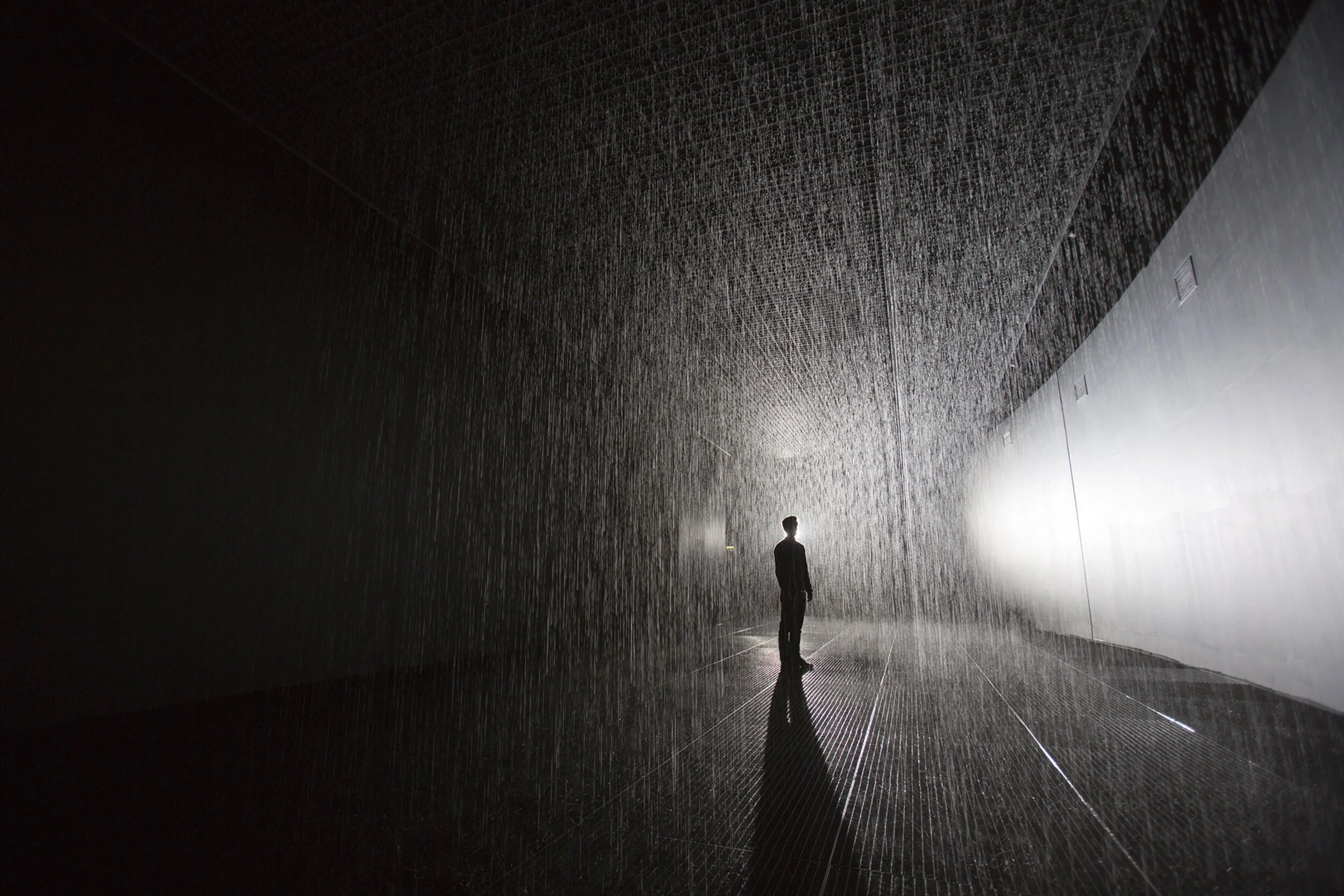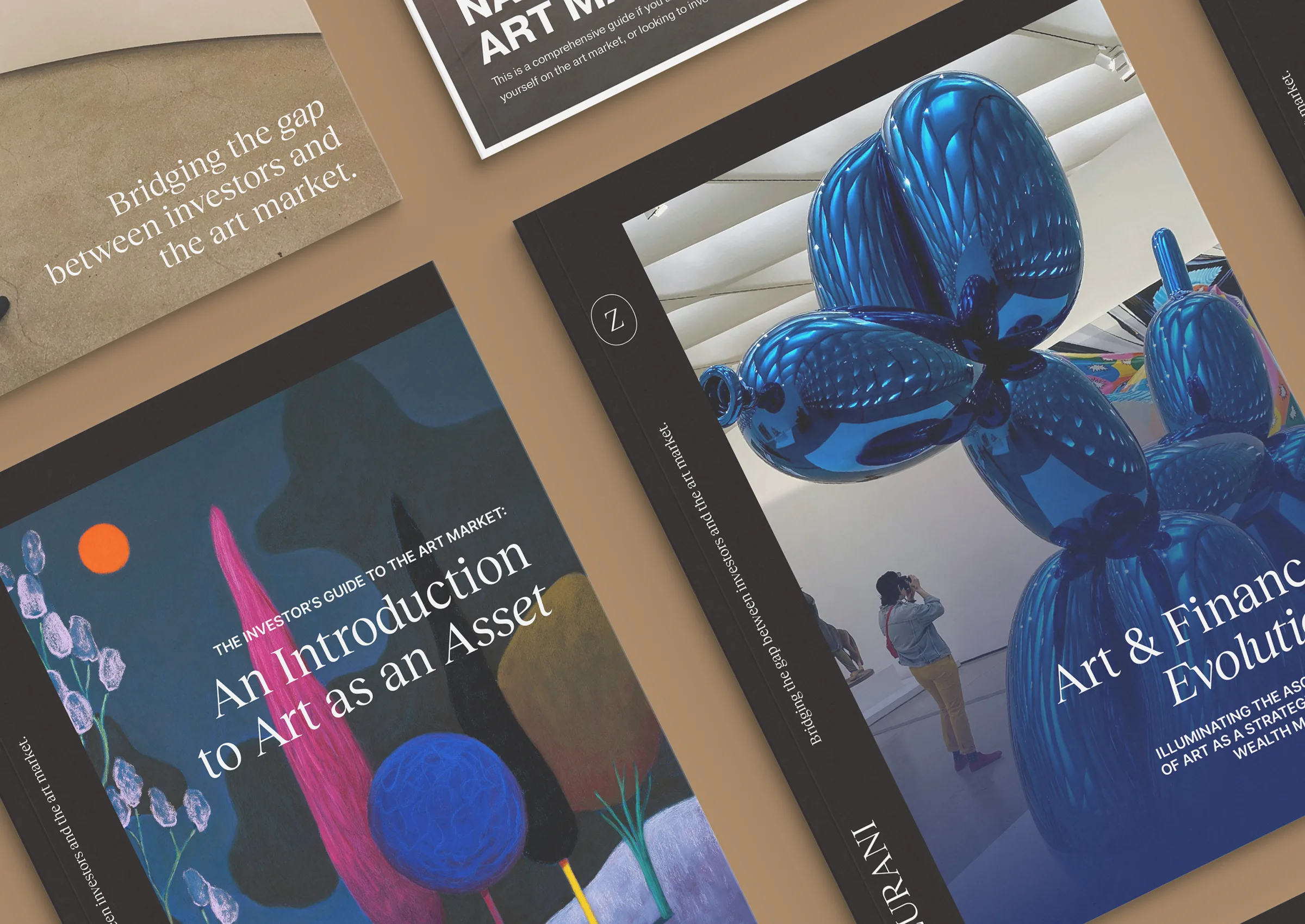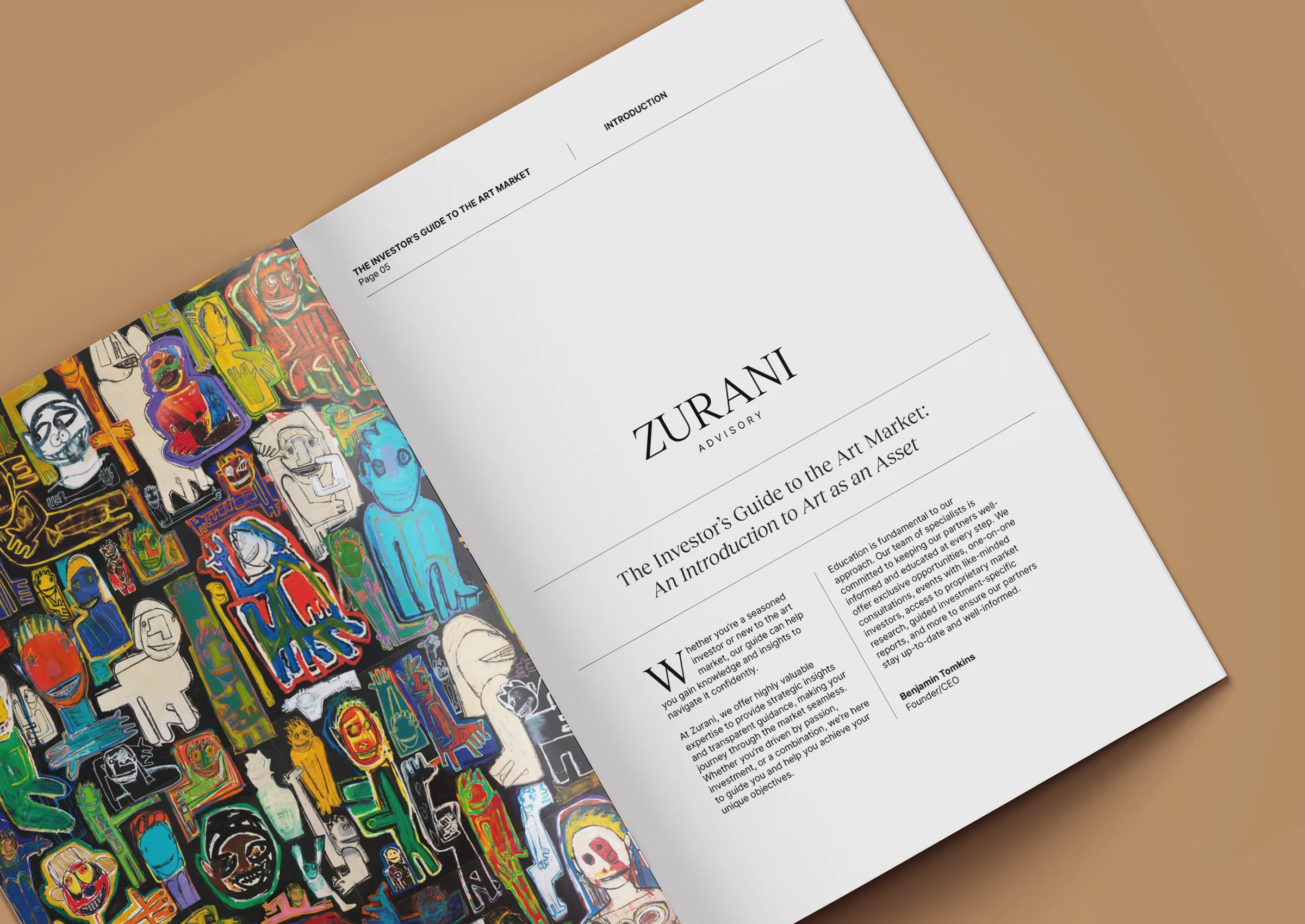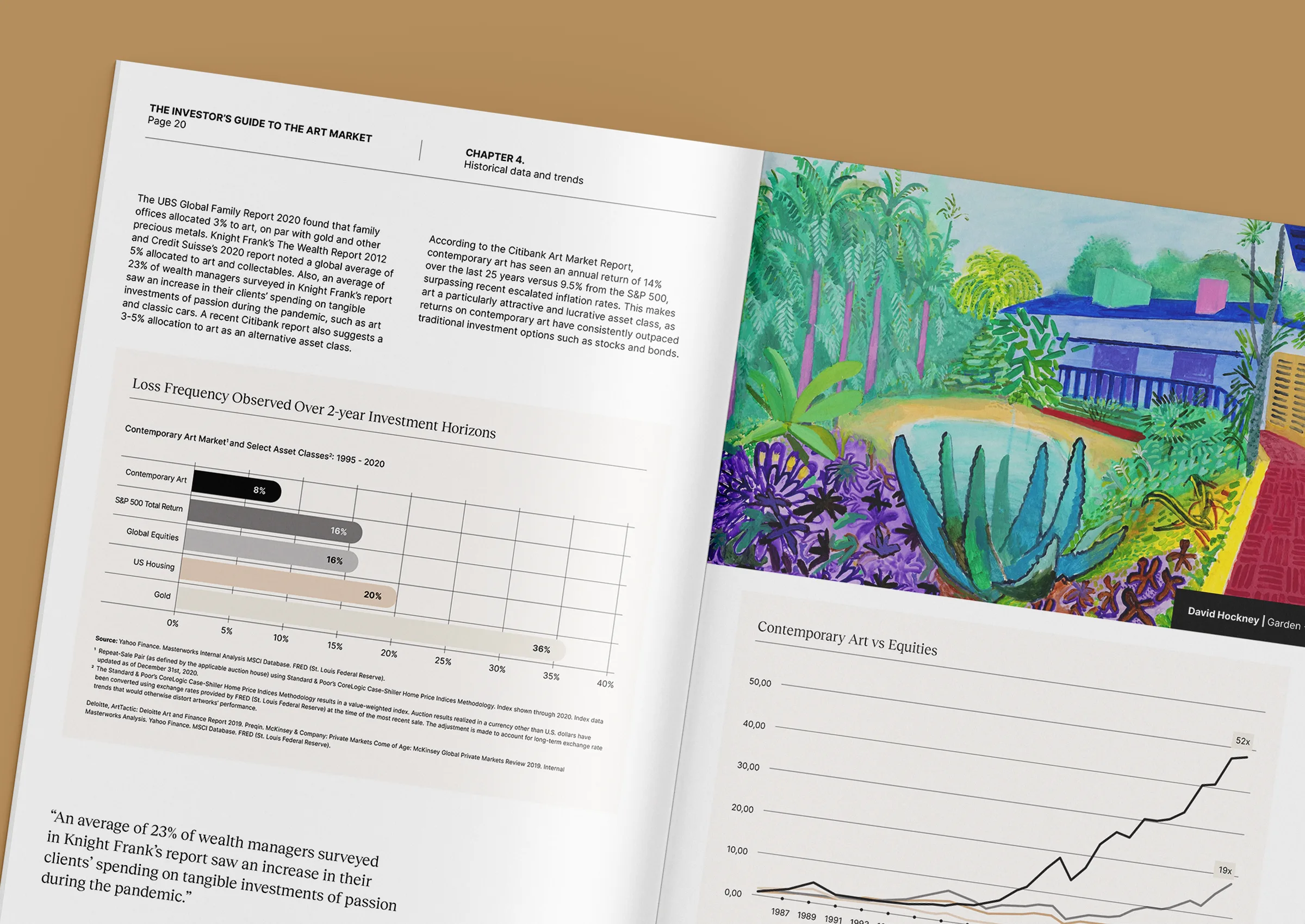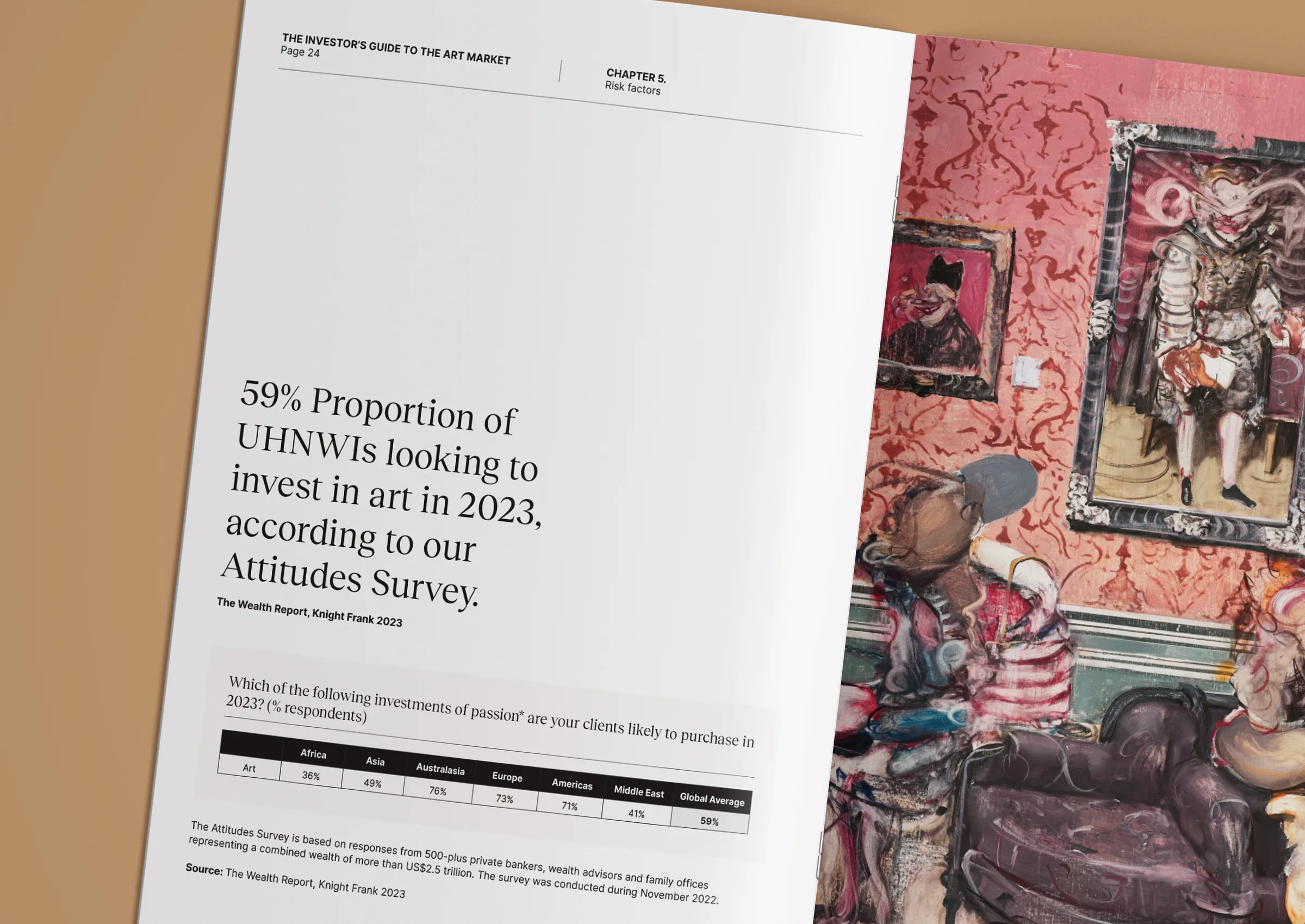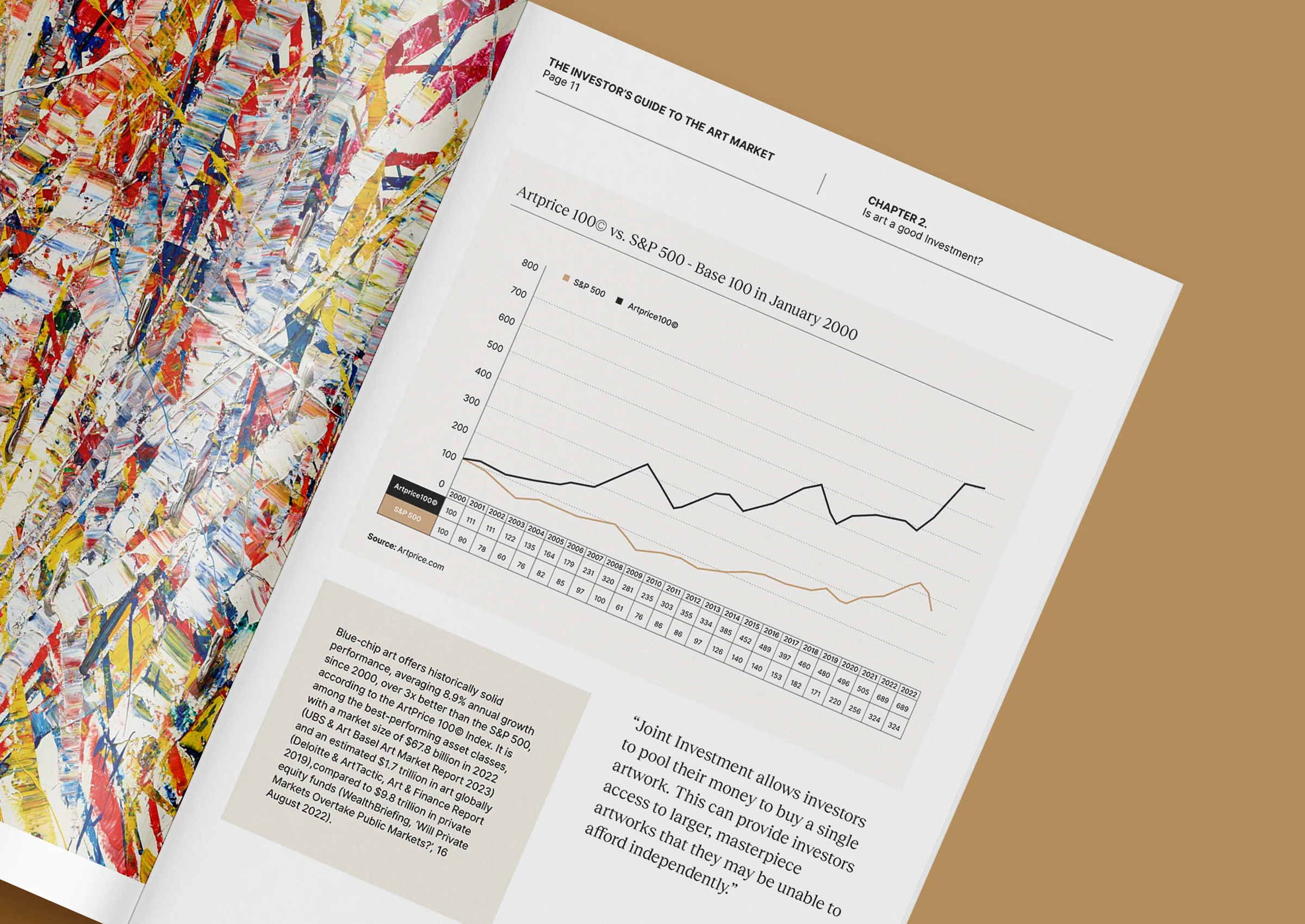Exploring human connection through light, water, and technology
Few installations have captured public imagination quite like Rain Room. Created by Random International, the immersive environment first debuted in London in 2012 before travelling to New York, Los Angeles, Shanghai, and Riyadh. Over a decade later, it continues to invite reflection on how we navigate the boundaries between control, technology, and nature.
Walking through stillness
Visitors step into a darkened room filled with falling water, yet remain dry. Sensors detect human movement, halting rainfall in real time and creating the illusion of control within chaos. This choreography of motion and light produces an atmosphere that is both serene and uncanny, encouraging a sense of awareness often lost in our digital world.
Rain Room isn’t designed to be observed from a distance; it demands participation. The sound of rainfall, the scent of water, and the stillness that follows each movement turn the experience into something meditative. The result is not only a spectacle of engineering but a quiet study of human perception.
When art becomes experience
Beyond its visual impact, Rain Room endures because it blurs the boundaries between art, design, and science. It is a space that responds to its audience, dissolving the divide between artwork and observer. The installation becomes an ecosystem of technology and emotion, a dialogue between the individual and the collective.
In an art world that often prizes ownership, Rain Room offers something different: presence. It reminds us that art can be ephemeral yet unforgettable, shaped as much by those who encounter it as by those who created it.
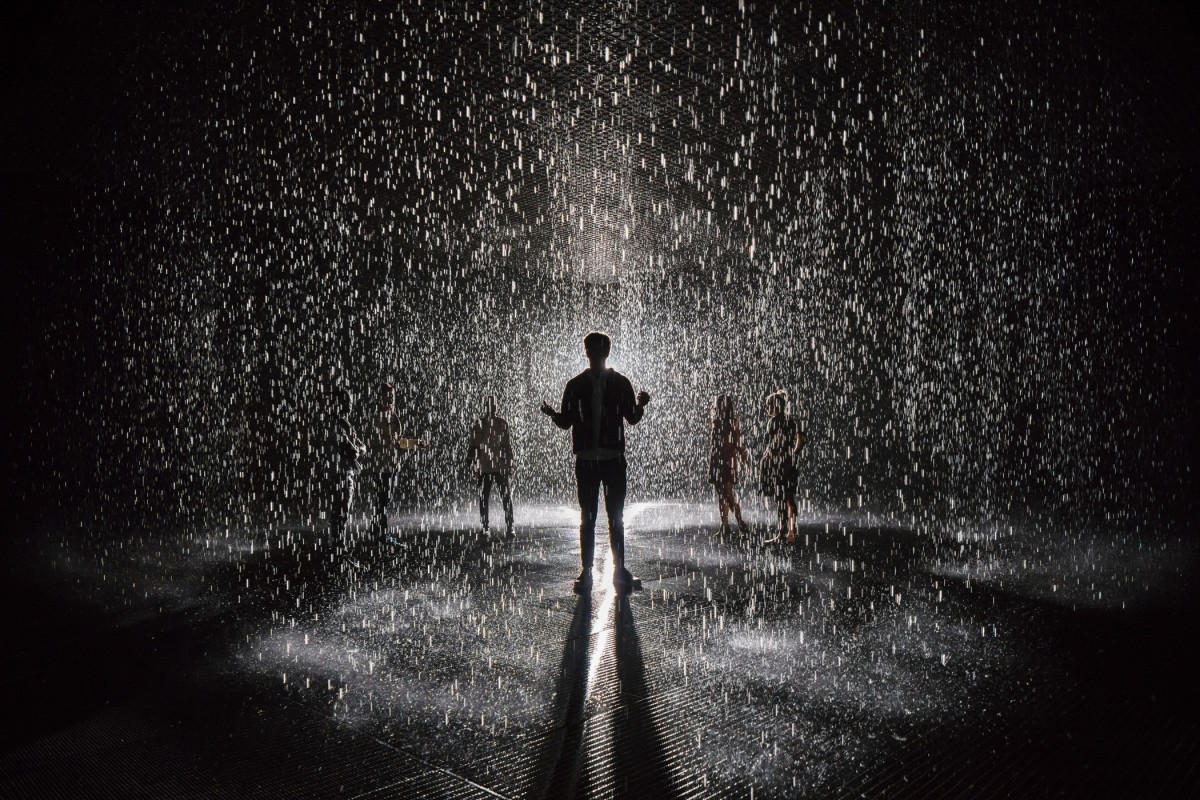
The evolution of immersive art
The ongoing success of Rain Room reflects a wider movement within contemporary art toward experiential and participatory installations. Artists are no longer confined to static media; instead, they are building environments that immerse viewers completely. These works respond to an age defined by technology, offering moments of pause, reflection, and reconnection.
For many, Rain Room remains a benchmark of this evolution, proof that immersive art can combine technical precision with emotional resonance. Its continued global presence is a reminder that innovation in art is not about spectacle alone, but about crafting experiences that move us.
A moment to pause
Ultimately, Rain Room reminds us why art still holds the power to pause time. In a world defined by constant motion, it offers stillness; in a culture driven by control, it invites surrender. Whether encountered as an artwork, a design feat, or a sensory experience, its true impact lies in how it makes us feel, briefly, completely, and profoundly, present in the space we occupy.
